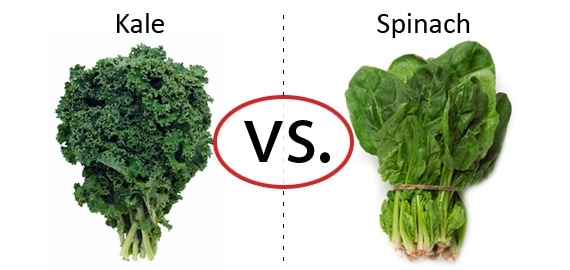
Educators! Click the link and take a quick survey to WIN a gift card to Insomnia Cookies!

Educators! Click the link and take a quick survey to WIN a gift card to Insomnia Cookies!


PREP TIME: 25 min
COOK TIME: 7
SERVINGS: 8


Who doesn’t love ice cream, especially on a hot, summer day? Ice cream comes in many different flavors and assortments. To name a few, ice cream lovers can find the following flavors at their local grocery store: chocolate chip, strawberry, cookies and cream, vanilla, M&M’s and even brownie flavored.
While the frozen milk snack has so many wonderful flavors and varieties, for some the high sugar content can pose a health concern to consumers. Listed below is a list of healthy ice cream alternatives. Enjoy!

For the recipe to this treat, click the link!

Get the recipe for this three ingredient healthy snack here.

These popsicles can be easily made at home. Click the link for the recipe.

For this cozy, fall treat click the link.

A chocolatey delectable! For this recipe, click here.

Banana Ice Cream can be made into many different flavors! For ten flavor ideas, click the link.

Non-dairy, vegan, nut free, plant based, paleo-friendly. To learn more click here.

For this super easy, three ingredient treat, click here.


This crazy delicious garlic parmesan spaghetti squash is one of the most popular recipes on Peas and Crayons — and for good reason too!
PREP TIME: 10 MINUTES
COOK TIME:1 HOUR
TOTAL TIME: 1 HOUR 10 MIN
Many spices hold cultural meaning to them in households throughout the world. Did you know, these same herbs and spices can improve your well-being in countless ways? The addition of herbs and spices to your diet is the simplest way to boost your immune system and fight off diseases and conditions such as inflammation.

Ginger is used to treat nausea caused by morning sickness, chemotherapy, and even sea sickness. Ginger can also be used as a pain management remedy as 2 grams of ginger a day fights colon inflammation the same way as aspirin.
Other research found that a mixture of ginger, cinnamon, mastic, and sesame oil decreased pain and stiffness experienced by those with osteoarthritis.

Rosemary been shown to suppress allergic responses and nasal congestion due to an active ingredient called rosmarinic acid.Rosemary is considered a cognitive stimulant and can help improve memory performance and quality. It is also known to boost alertness, intelligence, and focus.

Peppermint is known for its aromatherapy benefits however, this spice also has benefits when consumed through food. Many studies have shown that peppermint oil can improve pain management in irritable bowel syndrome (IBS). Peppermint helps to relax the colon and reduces abdominal bloating.

Cayenne Pepper is a type of chili used in many dishes around the world. Known for its spicy taste, cayenne pepper is also a remedy for those looking to reduce their appetite and increase fat burning.

Garlic has an in-depth history for its medicinal uses. Garlic supplementation is well known for combatting sickness, including the common cold. It is advised that those who experience symptoms relating to the common cold should increase their intake of garlic.
Studies have also found garlic to cause significant reductions in blood pressure in people with high blood pressure.

Turmeric is a good source of curcumin, an antioxidant that eases inflammation. Research suggests that curcumin may help ease pain. And other research shows that eating even small amounts of turmeric regularly may help prevent or slow down Alzheimer’s disease, possibly by helping prevent the brain plaques that lead to dementia.

The cocoa bean is chock-full of flavonoids, which are antioxidants that have been shown to boost heart health. Flavonoids seem to play a role in lowering cholesterol and blood pressure and helping keep your coronary (heart) arteries healthy, among other things. Also, studied suggest that daily intake of cocoa flavanols can improve mental performance in people with and without mental impairments.

Nutmeg is found to have health benefits, including its ability to relieve pain, soothe indigestion, strengthen cognitive function, detoxify the body, boost skin health, alleviate oral conditions, reduce insomnia, increase immune system function, and prevent leukemia, and improve blood circulation.

This sweet, pungent spice is in many pumpkin spice mixes. It’s known to soothe an upset stomach, and lab studies show it may also help fight inflammation. Cardamom may help fight bacteria in the mouth, a common cause of bad breath, cavities, and gum disease.

Oregano has many nutrients, including vitamins K and E, calcium, iron, manganese and fiber. Also, oregano is high in antioxidants. Antioxidants prevent cell damage caused by free radicals, helping fend off heart disease, stroke and cancer. Plus, oregano has phytonutrients that help fight infections.


Gluten is a family of proteins found in grains, including wheat, rye, spelt, and barley. Wheat is the most common form of gluten from the grains listed.
When flour mixes with water, the gluten proteins form a sticky network that has a glue-like consistency. This glue like property makes the dough elastic and gives bread the ability to rise during baking. It also provides a chewy, satisfying texture. Interestingly, the name “gluten” comes from this glue-like property of wet dough.
Gluten can be found in many types of foods, even ones that would not be expected. While wheat is the most common, there are three main gluten substances including: wheat, barley and rye.

Wheat is commonly found in:

Barley is commonly found in:

Rye is commonly found in:
There has been research on gluten intolerance and/or sensitivity and Celiac Disease. Gluten sensitivity or gluten intolerance has been coined to describe those individuals who cannot tolerate gluten and experience symptoms similar to those with celiac disease yet lack the same antibodies and intestinal damage as seen in celiac disease. Celiac Disease is an immune reaction to eating gluten, a protein found in wheat, barley, and rye.Over time, the immune reaction to eating gluten creates inflammation that damages the small intestine’s lining, leading to medical complications. It also prevents absorption of some nutrients

Let’s consider a person without Celiac Disease but an intolerance or sensitivity to gluten. Research has categorized gluten intolerance and sensitivity to be less severe than Celiac disease. However, many of the symptoms are the same. People with non-celiac gluten sensitivity have a prevalence of extraintestinal or non-GI symptoms, such as headache, “foggy mind,” joint pain, and numbness in the legs, arms or fingers. Symptoms typically appear hours or days after gluten has been ingested, a response typical for innate immune conditions like non-celiac gluten sensitivity.

Gluten intolerances and sensitivities are not the same as allergies. In fact, someone can experience an intolerance or sensitivity and test negative to having a gluten allergy.




Leafy green spinach is a superfood that can be prepared a number of ways due to its versatility. Spinach can be used within green smoothies aa a source of fiber. Spinach can also be baked into casseroles and fried into breakfast entree’s such as eggs. Spinach (Spinacia oleracea) is a leafy green vegetable that originated in Persia. It belongs to the amaranth family and is related to beets and quinoa. Did you know spinach offers major benefits to those who choose consume this superfood?
Spinach is a source of Vitamin K which aids in bone support. Vitamin K works to enhance a protein called Osteocaic that is responsible for stabilizing calcium in bones. Spinach also provides a source of calcium, Vitamin D, fiber, potassium, magnesium, and Vitamin C. The combination of these nutrients all aid in bone health.
Spinach is high in Vitamin A which eliminates viruses and bacteria. Vitamin A helps our skin and mucus membranes. Vitamin A is also known to be good for growth in bodily tissues including skin and hair. To help reduce the loss of hair and infections, the consumption of spinach is the solution.
Rich in Vitamin C, spinach supports heart health. There is a rumor that spinach helps with facial wrinkles. Pregnant mothers are advised to consume spinach to help with prenatal and cardiovascular diseases. Spinach is rich in lutein which helps prevents heart attacks and cures heart diseases.
Spinach is mostly made of water. One cup of cooked spinach is 41 calories. Spinach provides 160% of the daily goal for Vitamin A and about 40% for Vitamin C.
Through magnesium, spinach is able to help generate energy throughout a days span. Spinach is a excellent source of folate. As you navigate through the day, the consumption of spinach helps turn your body into usable energy. Spinach is alkaline in nature. This is why spinach is a number one choice for many athletes.
Spinach contains anti-inflammatory effects that aid in brain health. One study shows that when older adults consume one to two servings of spinach daily, that person had the same cognitive abilities as someone 11 years younger in comparison to those who did not consume greens.

Spinach and Kale are similar in a number of ways. For starters, both vegetables are leafy greens that are high in fiber. Which is better for you? Let’s look at the facts and you can determine which route to take.
Crunchy Creamy Sweet provides a recipe for the best sautéed spinach and it looks delicious!



Prep Time- 2 mins
Cook Time-7 mins
Total Time- 9 mins
A fresh spinach sauteed with garlic and onions in olive oil and butter. This easiest and fastest spinach side dish is healthy and low-carb diet friendly.
Course: Side Dish
Servings: 4 Servings
Calories: 85 Calories
Instructions


What is SNAP? SNAP is the Supplemental Nutrition Assistance Program for Needy Families. As a 90’s baby, I grew up calling this Food Stamps. However, SNAP is formal terminology.
SNAP provides nutrition benefits to supplement the food budget of needy families so they can purchase healthy food and move towards self-sufficiency.
SNAP is a national program that is there for families in need of food. To receive SNAP benefits, you and your family must qualify in your state.

USDA provides a breakdown of eligibility guidelines for families to follow. There is certain criteria to qualify including meeting income limits. SNAP benefits are updated yearly for recipients.
There are special rules for households with elderly or disabled family members. To learn more about these rules, click here.
SNAP Benefits in Tennessee can be used online at the following stores:
To learn more about applying for SNAP in Tennessee, click HERE.

There are many joys to raising one big happy family. But, let’s get real, feeding one big happy family is another story. Parent’s of one or multiples can relate to this blog post. There are many ways to maintain a daily, weekly, or monthly grocery shopping budget. We are going to explore some of these areas as a means of learning more options when it comes to grocery shopping for your family.

One strategy is to meal plan. If you’re anything like me, your car wheels are spinning from sun up until sun down, most days. Meal planning eliminates the temptation of stopping at local fast food restaurants and provides a health meal alternative for you and your family. To successfully meal plan, it is suggested that the “planner” and “meal prepper” arrange all of the meal items on Sunday prior to the week.
Now let’s look at Meal Planning On A Budget. This simply involves the core components of a meal- the protein, vegetable, and carbohydrate. The simplest and cheapest way to accomplish this is by sticking to one protein (chicken, fish, broccoli-for vegan families), one choice of carb (rice, sweet potato), and mix up the vegetables throughout the week. Boring right?! You’re encouraged to get creative when fixing these items for your family. Change up the spices blends and cooking styles. Instead of grilling the chicken, place a few pieces in the oven or boil them.


Living on a Cheap provides some very reasonable solutions to maintaining a $4 day grocery bill. This averages to about $120 a month. For larger families, the budget might need to be adjusted, however, the same concepts can be applied. These tips, along with my personal experience tips will be given:

